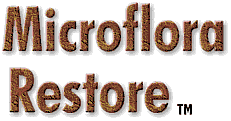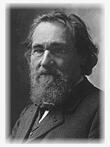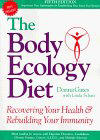

 robiotics is one of the most important discoveries
to be made in the field of nutrition. Although given a great deal of
attention of late, its role as a critical component of good health has
been established and well known for well over 100 years. In its simplest
terms, probiotics refers to live microbial supplements, usually
bacteria, which are beneficial to the host user by displacing or
destroying competing pathogenic micro-organisms in the intestinal track,
as well as assisting the body in ridding itself of other organic debris. robiotics is one of the most important discoveries
to be made in the field of nutrition. Although given a great deal of
attention of late, its role as a critical component of good health has
been established and well known for well over 100 years. In its simplest
terms, probiotics refers to live microbial supplements, usually
bacteria, which are beneficial to the host user by displacing or
destroying competing pathogenic micro-organisms in the intestinal track,
as well as assisting the body in ridding itself of other organic debris.

 Given the extensive knowledge
and history behind probiotics, it is amazing more health-conscious
consumers and health care professionals don't pay attention to this area.
The concept was most widely developed in the West with the work of
Dr. John Harvey Kellogg (1852-1943). Though his eccentricities in other
areas of been widely publicized, there can be little doubt that
Dr. Kellogg was one of the most prescience physicians of the early
20th century: he promoted the concepts of roughage and high fiber
diets, the importance of regularity, the value of vegetarianism
(or a diet not so dependent on animal proteins) - as well as the
critical contribution a healthy intestinal flora, all many years before
peer-reviewed scientific study and the winds of convention would
support these views. His practice of introducing live yogurt culture
to the lower bowel rectally following colonic irrigation, though unusual
in a clinical setting, could not be found to be without merit
given our current understanding of intestinal flora balance. Given the extensive knowledge
and history behind probiotics, it is amazing more health-conscious
consumers and health care professionals don't pay attention to this area.
The concept was most widely developed in the West with the work of
Dr. John Harvey Kellogg (1852-1943). Though his eccentricities in other
areas of been widely publicized, there can be little doubt that
Dr. Kellogg was one of the most prescience physicians of the early
20th century: he promoted the concepts of roughage and high fiber
diets, the importance of regularity, the value of vegetarianism
(or a diet not so dependent on animal proteins) - as well as the
critical contribution a healthy intestinal flora, all many years before
peer-reviewed scientific study and the winds of convention would
support these views. His practice of introducing live yogurt culture
to the lower bowel rectally following colonic irrigation, though unusual
in a clinical setting, could not be found to be without merit
given our current understanding of intestinal flora balance.

 Another great medical mind of
this era was 1908 Nobel laureate,
Dr. Ilya
Ilyich Mechnikov (1845-1916). Mechnikov correctly observed that Bulgarian peasants
lived longer than average and associated this with their intake of
cultured, sour milks. He associated their rich diet of lactobaccillus
with increases in longevity, and found that such a diet curbed
the abnormal growth of pathogenic bacteria in the intestinal tract. Another great medical mind of
this era was 1908 Nobel laureate,
Dr. Ilya
Ilyich Mechnikov (1845-1916). Mechnikov correctly observed that Bulgarian peasants
lived longer than average and associated this with their intake of
cultured, sour milks. He associated their rich diet of lactobaccillus
with increases in longevity, and found that such a diet curbed
the abnormal growth of pathogenic bacteria in the intestinal tract.
 Today we understand even
better the importance of intestinal flora balance. The colon
is literally a battleground for beneficial and harmful bacteria
and toxins, and the side that "wins the war" determines our
general state of digestion, elimination, and general health.
When healthy, the intestinal tract is lined with billions
of beneficial bacteria which are there there to keep our digestive
system clean by feeding on waste, putrefaction, toxins, fungi
such as yeast, and harmful bacteria. The benefits are
well-established: Today we understand even
better the importance of intestinal flora balance. The colon
is literally a battleground for beneficial and harmful bacteria
and toxins, and the side that "wins the war" determines our
general state of digestion, elimination, and general health.
When healthy, the intestinal tract is lined with billions
of beneficial bacteria which are there there to keep our digestive
system clean by feeding on waste, putrefaction, toxins, fungi
such as yeast, and harmful bacteria. The benefits are
well-established:
- Providing competition for harmful bacteria such as
salmonella and e.coli, thus keeping them at harmless levels.
- Producing specific acidulents in the colon that locally
alter pH so that the growth of harmful bacteria and yeast
are inhibited.
- Regulating bowel movements by keeping the walls of the colon
clean and free of waste build up. Build up of waste on the intestinal
wall slows the progress of waste through the intestinal tract and
the progress of digestion, causing intes-tinal gas, bloating and
constipation. Beneficial bacteria also help prevent diarrhea by
protecting against overgrowth of harmful diarrhea causing bacteria.
- Stimulating the formation of antibodies, which fight against infection.
- Helping to regulate cholesterol levels.
- Helping to regulate hormonal levels.
- Creating important amino acids in the body, which are just
natural metabolites of beneficial bacteria.
- Assisting in efficient absorption of nutrients.
How Our Bodies Acquire Beneficial Bacteria
 As a baby goes through the birth
process, beneficial bacteria are passed from mother to baby in the birth canal.
Mother's milk is designed to support these newly introduced bacteria
and stimulate rapid colonization in the baby's digestive tract, setting up
a healthy di-gestive system and helping to build his immune system as well. As a baby goes through the birth
process, beneficial bacteria are passed from mother to baby in the birth canal.
Mother's milk is designed to support these newly introduced bacteria
and stimulate rapid colonization in the baby's digestive tract, setting up
a healthy di-gestive system and helping to build his immune system as well.
 Ideally when baby gets older, he will
keep his intestinal flora properly balanced by eating fresh vegetables
and fruits, which carry friendly soil born bacteria. Cultured dairy
products such as yogurt, cottage cheese and buttermilk are also helpful
in maintaining a healthy microbial population. Ideally when baby gets older, he will
keep his intestinal flora properly balanced by eating fresh vegetables
and fruits, which carry friendly soil born bacteria. Cultured dairy
products such as yogurt, cottage cheese and buttermilk are also helpful
in maintaining a healthy microbial population.
How We Lose Intestinal Flora Balance
 In a colon that has a healthy
balance of beneficial bacteria, there are over 400 separate species
of friendly microbes. That's literally billions of bacteria per
square centimeter, all working to keep your body strong and healthy.
Unfortunately, the balance between the "good
guys" and the "bad guys" can easily be thrown out of balance. In a colon that has a healthy
balance of beneficial bacteria, there are over 400 separate species
of friendly microbes. That's literally billions of bacteria per
square centimeter, all working to keep your body strong and healthy.
Unfortunately, the balance between the "good
guys" and the "bad guys" can easily be thrown out of balance.
 The number one cause of
bacterial imbalance is the use of antibiotics. Antibiotics destroy
all bacteria in the body, good and bad. Once those microbial
numbers are depleted, harmful organisms such as Candida albicans,
(yeast), can easily overwhelm the system. The number one cause of
bacterial imbalance is the use of antibiotics. Antibiotics destroy
all bacteria in the body, good and bad. Once those microbial
numbers are depleted, harmful organisms such as Candida albicans,
(yeast), can easily overwhelm the system.
 Other drug therapies,
for example birth control pills, the heavy use of non-steroidal
anti-inflammatory drugs (NSAIDS) such as Advil or Motrin can disrupt
microbial balance. So also, can radiation therapy. Some other
factors that can contribute to an improper balance of intestinal flora
are dietary habits such as excessive sugar or alcohol consumption,
or drinking fluoridated
or chlorinated water. Other drug therapies,
for example birth control pills, the heavy use of non-steroidal
anti-inflammatory drugs (NSAIDS) such as Advil or Motrin can disrupt
microbial balance. So also, can radiation therapy. Some other
factors that can contribute to an improper balance of intestinal flora
are dietary habits such as excessive sugar or alcohol consumption,
or drinking fluoridated
or chlorinated water.
 In the 1800's most of our
great-grandparent's food came from local farms or their own gardens.
They ate seasonal fresh fruits and vegetables, endowed with
abundant beneficial microbial life. Before the industrial age,
Americans suffered far fewer digestive problems than we do today. In the 1800's most of our
great-grandparent's food came from local farms or their own gardens.
They ate seasonal fresh fruits and vegetables, endowed with
abundant beneficial microbial life. Before the industrial age,
Americans suffered far fewer digestive problems than we do today.
 With the coming of the
industrial revolution, the Western diet evolved from primarily
seasonal fresh produce to sterile, heat processed canned or frozen
foods. Under our modern conventional farming methods of today,
the fresh foods we do eat are sprayed with fungicides and pesticides,
which kill a great number of beneficial microbes. With the coming of the
industrial revolution, the Western diet evolved from primarily
seasonal fresh produce to sterile, heat processed canned or frozen
foods. Under our modern conventional farming methods of today,
the fresh foods we do eat are sprayed with fungicides and pesticides,
which kill a great number of beneficial microbes.
 For these reasons and more,
many Americans suffer from "ecological deserts" in their
intestinal tracts. Candida albicans (see sidebar at right)
is one of the outcomes from this imbalance. (By the way,
Candida can quite readily
be treated quickly, easily, and with no side effects with
Lugol's Iodine. However, you will want
to use Microflora Restore afterwards to replenish
lost bacterial flora.) For these reasons and more,
many Americans suffer from "ecological deserts" in their
intestinal tracts. Candida albicans (see sidebar at right)
is one of the outcomes from this imbalance. (By the way,
Candida can quite readily
be treated quickly, easily, and with no side effects with
Lugol's Iodine. However, you will want
to use Microflora Restore afterwards to replenish
lost bacterial flora.)
The Solution: Microflora Restore!
 If you consume a Western
diet or have any of the symptoms found in the column at right,
chances are you suffer, in part, from a microbial imbalance.
Fortunately, good flora is easily restored. Microflora Restore
contains 28 different "soil bacteria" that assist in quickly
restoring intestinal flora health. Unlike many other probiotic
products, you need very little Microflora to accomplish
the job: just a half gram (0.50 grams), just enough to cover
the tip of a teaspoon, mixed with water or fruit juice, is
a sufficient daily dosage. If you consume a Western
diet or have any of the symptoms found in the column at right,
chances are you suffer, in part, from a microbial imbalance.
Fortunately, good flora is easily restored. Microflora Restore
contains 28 different "soil bacteria" that assist in quickly
restoring intestinal flora health. Unlike many other probiotic
products, you need very little Microflora to accomplish
the job: just a half gram (0.50 grams), just enough to cover
the tip of a teaspoon, mixed with water or fruit juice, is
a sufficient daily dosage.

 An initial response to how
we package Microflora Restore might be -- "Wouldn't it
easy to put in capsules?" An initial response to how
we package Microflora Restore might be -- "Wouldn't it
easy to put in capsules?"
 It might -- but people
are taking enough tablets and capsules now. They need to be
consuming better FOOD. And that's what Microflora Restore is --
a highly concentrated food. We believe that capsulating and
tabletting should be done when dosage is critical or there
are taste problems -- not because the marketing dept. says
you can charge more money. Microflora Restore is has
a pleasant taste, and it drops easily into a glass of juice
or the blender. It might -- but people
are taking enough tablets and capsules now. They need to be
consuming better FOOD. And that's what Microflora Restore is --
a highly concentrated food. We believe that capsulating and
tabletting should be done when dosage is critical or there
are taste problems -- not because the marketing dept. says
you can charge more money. Microflora Restore is has
a pleasant taste, and it drops easily into a glass of juice
or the blender.
 As to dose,
that's easy. One-half gram (0.50 grams) is just shy
of a quarter tsp. (1/4 teaspoon - see enclosed picture - or
click on image for enlargement). Since the "quarter
teaspoon" comes with most measuring spoon sets (available
for a couple dollars from most supermarkets), that makes
taking this product - without yet another capsule - a real
cinch. As to dose,
that's easy. One-half gram (0.50 grams) is just shy
of a quarter tsp. (1/4 teaspoon - see enclosed picture - or
click on image for enlargement). Since the "quarter
teaspoon" comes with most measuring spoon sets (available
for a couple dollars from most supermarkets), that makes
taking this product - without yet another capsule - a real
cinch.
|
Testimonials
 I am really impressed
with your "Microflora Restore" product! I was having intestinal
and colon problems due to heavy antibiotic use. It is calming
my stomach down and helping my system to be more regular. I am really impressed
with your "Microflora Restore" product! I was having intestinal
and colon problems due to heavy antibiotic use. It is calming
my stomach down and helping my system to be more regular.
 suejon@cowtown.net
suejon@cowtown.net
April 3, 2003
... continuing ...
|
 A single dose is just 0.5 grams. - see article below.
There are 182 servings per jar - under 14 cents per dose.
So... What's In It?
A single dose is just 0.5 grams. - see article below.
There are 182 servings per jar - under 14 cents per dose.
So... What's In It?
 The beneficial bacteria
in Microflora Restore (listed below by species) are
all Class I bacterial agents as
rated
by the American Type Culture Collection Catalogue (301-881-2600)
in Rockville, Maryland (USA). (Thus, even in the U.S.,
they are legal under the Federal Register, Vol. 54 #38,
1989). Class 1 bacteria are rated as "of no or minimal
hazard under ordinary conditions." See below for
testimonials related to the use of Microflora
Restore: The beneficial bacteria
in Microflora Restore (listed below by species) are
all Class I bacterial agents as
rated
by the American Type Culture Collection Catalogue (301-881-2600)
in Rockville, Maryland (USA). (Thus, even in the U.S.,
they are legal under the Federal Register, Vol. 54 #38,
1989). Class 1 bacteria are rated as "of no or minimal
hazard under ordinary conditions." See below for
testimonials related to the use of Microflora
Restore:
- Arthrobacter agilis
- Arthrobacter citreus
- Arthrobacter globiformis
- Arthrobacter leuteus
- Arthrobacter simplex
- Azotobacter chroococcum
- Azotobacter paspali
- Azospirillum brasiliencise
- Azospirillum lipoferum
- Bacillus brevis
- Bacillus macerans
- Bacillus pumilus
- Bacillus polymyxa
- Bacillus subtilis
- Bacteroides lipolyticum
- Bacteroides succinogenes
- Brevibacterium lipolyticum
- Brevibacterium stationis
- Kurtha zopfil
- Myrothecium verrucaria
- Pseudomonas calcis
- Pseudomonas dentrificans
- Pseudomonas flourescens
- Pseudomonas glathei
- Phanerochaete chrysosporium
- Streptomyces fradiae
- Streptomyces cellulosae... and...
- Streptomyces griseoflavus
Average Microbiological
Assay / Standard
- Coliforms -- negative
- E. Coli -- negative
- Salmonella -- negative
Minimum Total
Plate Count
CFU = colony forming units.
In practical terms, the minimum number of separable cells
on the surface of or in semi-solid agar medium which gives rise to
a visible colony of progeny. CFUs may consist of pairs, chains
and clusters as well as single cells.
Symptoms of
Albicans Overgrowth
- Chronic vaginal yeast infections
- Chronic fatigue
- Headaches
- Depression
- Skin rash
- Low sex drive
- Allergies
- Joint and muscle pain
- Weight gain
- Decreased immune system
- Increased intestinal gas and bloating
- Impaired memory and mental clarity.

 FACT:
It is estimated that 80 million Americans suffer from candidiasis.
(The Body Ecology Diet - Donna Gates and Linda Schatz, B.E.D. Publications)
Candida, or candidiasis often goes hand in hand with serious illnesses such as Epstein-Barr virus, AIDS, and diabetes. FACT:
It is estimated that 80 million Americans suffer from candidiasis.
(The Body Ecology Diet - Donna Gates and Linda Schatz, B.E.D. Publications)
Candida, or candidiasis often goes hand in hand with serious illnesses such as Epstein-Barr virus, AIDS, and diabetes.
Are Probiotics Safe?
 Unlike most medications
probiotics don`t seem to have any side effects. A recent review identified
143 human clinical trials of probiotics between 1961 and 1998, involving
more than 7,500 subjects, with no adverse effects being reported. Unlike most medications
probiotics don`t seem to have any side effects. A recent review identified
143 human clinical trials of probiotics between 1961 and 1998, involving
more than 7,500 subjects, with no adverse effects being reported.
|
To Users in the U.S.:. Neither the information on this page,
nor this product,
have been evaluated by the U.S. Food & Drug
Administration. Therefore, this product is not intended to diagnose,
treat, cure or prevent any disease.
|
 Ingredients: Ingredients: Contains
only pure microbe cultures, dried down in a food grade diatomaceous earth.
No artificial color, preservatives, flavor, soy, gluten or animal products
are added to this product. Our culture media and methods are
proprietary information.
|